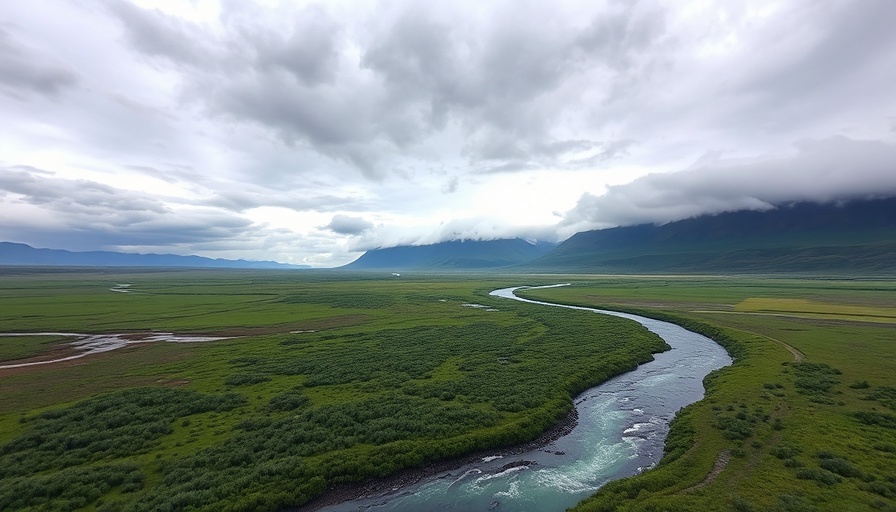
Into the Thaw: Witnessing the Environmental Shift in Alaska
The renowned writer and explorer Jon Waterman has long captured the beauty of Alaska through his expeditions. In his new book, Into the Thaw: Witnessing Wonder Amid the Arctic Climate Crisis, Waterman highlights the profound changes he has witnessed in this majestic landscape over nearly four decades. With Alaska warming at an alarming rate—four times faster than the global average—an urgent need for reflection and action emerges from his narratives.
Climate Crisis Unfolding
Waterman's accounts unveil a harsh reality: as sea ice melts and permafrost thaws, the very fabric of life in the Arctic is at stake. The traditional lifestyles of Indigenous peoples, the hunting patterns of polar bears, and the intricate ecosystems are all facing unprecedented threats. As he notes, the rapid pace of climate change today differs from the Earth’s historical shifts; humans are accelerating these changes through industrial actions.
The Cost of Arctic Drilling
Parallel to Waterman's observations is the ongoing oil drilling debate exemplified by projects like the Willow Project and the 2025 lease auctions in the Arctic National Wildlife Refuge. While the Trump administration sought to increase oil and gas extraction in Alaska, the reality paints a different picture: drilling is economically unviable and environmentally reckless. Experts warn that investing in Arctic oil fields locks the economy into uncertainty, as seen during previous auction failures where no companies showed interest in the Arctic Refuge drilling rights.
Environmental Consequences of Melting Permafrost
As permafrost thaws, it releases potent greenhouse gases like carbon dioxide and methane into the atmosphere, a scenario that could escalate global warming. This feedback loop is alarming; as Waterman poignantly describes, the landscapes once rigid and stable are now sending alarming signals of distress. Coastal erosion, altered wildlife behaviors, and ecosystem disruptions tell a tale that transcends local boundaries, impacting climate globally.
A Call for Prudent Choices
The ongoing battle for the Arctic is emblematic of a larger struggle: the fight to prioritize ecological preservation over fleeting profits from fossil fuels. Will infrastructure like roads and oil rigs further encroach upon the pristine environment, leading to loss of biodiversity? Or can society pivot towards renewable energy and sustainable practices that ensure the long-term health of both Alaskan ecosystems and the global climate?
As policymakers consider new proposals, it is imperative to recognize that investing in renewable energy provides sustainable job opportunities and reinforces ecological integrity. The stories from Waterman's expeditions are a stark reminder of what is at stake—lost habitats, dwindling wildlife, and the degradation of cultures that have thrived for generations.
Enduring Resilience
Despite the challenges, hope endures. Environmental groups continue to advocate for the preservation of Alaska’s unique environments. Projects like the successful campaigns to protect areas from drilling highlight the power of collective action. Moreover, as climate awareness rises, the call for community-driven renewable initiatives grows stronger.
In the context of an impending climate crisis, Waterman’s book serves not only as an elegy for what was but also as a clarion call for what can still be. The melting ice may signify the waning of an era, but it also heralds the opportunity for transformation, requiring a unified commitment to sustainability.
 Add Row
Add Row  Add
Add 



 Add Row
Add Row  Add
Add 

Write A Comment